| From Pete Ramey - Understanding the horse's sole: "The seams between the sole and frog; the collateral grooves, are the most reliable and important guide we have for determining the needs of the foot. A full understanding of their significance and the information they offer will give you “x-ray vision” when you look at every hoof." The pedal/coffin bone (P3) is dome-shaped on the bottom and covered with a 2-6 mm corium containing blood vessels and nerves. The sole covers this and provides protection - simply put, the thicker the sole, the more protection. So it is important to be able to estimate sole thickness. In his book "Care and Rehabilitation of the Equine Foot", p 286, Pete Ramey suggests that the bottom of the collateral groove is fairly consistently around 10 mm (of sole) from the solar corium, so the collateral grooves can give an indication of the position of P3. In the few cases where we have been able to measure collateral groove depths and have x-rays taken, we have found the collateral groove measurements have given a good indication of the palmar angle of P3 - more on this another day! How to measure collateral groove depths Use something hard, flat and even, like a rasp or metal ruler, to lay across the top of the hoof from side to side, and a measuring stick or hoofpick to measure the depth from the bottom of the collateral groove to the flat object. The collateral groove depth should be measured from the bottom of the collateral groove to the junction of the sole with the wall. So if you have wall height above the sole, you will need to take this wall height off the measured depth, to calculate the true depth. The Precision Hoof Pick website has a good explanation of how to measure collateral groove depths with photos, and the Precision Hoof Pick is an excellent tool for taking accurate measurements. You can make a collateral groove depth measuring stick very easily with a lolly stick, some coloured pens and a ruler - the stick below is coloured in 0.5 cm increments, the same on both sides. Update: TLS now prefers to use something narrower to really get down into the collateral groove - such as a wooden kebab stick. The Hoof Evaluator, although a bit expensive, looks very useful for measuring collateral groove depths and other measurements on the foot. Another suggestion is to use a clench: Alternative Uses of a Horseshoe Nail by Christoph Schork - EasyCare Inc | Measure the collateral grooves at the deepest part, which is normally towards the back of the foot, in line with the bars (deepest part/bars), and at the apex/tip of the frog (apex). Measure both sides of the frog - this tells you whether the foot is balanced from side to side. |
Pete Ramey suggests that collateral groove depth should normally be:
10 - 20 mm at the apex of the frog
15 - 30 mm at the deepest part towards the rear of the frog/beside the bars.
| If you have less than 8 - 10 mm collateral groove depth, always use boots with thick pads or keep the horse on deep soft conforming bedding to protect the sole until the sole has thickened. When trimming, always keep the rasp 15 mm above the bottom of the collateral grooves - this may mean floating the rasp in the air. For an excellent demonstration of floating the rasp above the toe, watch Linda Cowles' ml Trim4 video (from around 3.30 minutes in). |
What if the collateral groove depths do not fall into the "ideal" 10-20 mm at the apex, 15-30 mm at the bars, the depth at the apex is less than the depth at the bars, or the measurements are not the same on both sides of the frog?
| 1. CG depth at the apex is greater than CG depth at the bars (so the "deepest part" isn't the deepest part!). This could indicate a negative palmar angle, that the heel is too low, or that there is too much sole depth in front of the frog. Reassess the trim and if necessary have x-rays taken. See What to Know About Trimming the Toe... by Maria Siebrand - EasyCare Inc. |
| 2. CG depth at the deepest part/bars is much greater than CG depth at the apex. If the depth at the deepest part is much more than the depth at the apex (in our experience, usually more than around 1 cm difference), this could indicate too large a palmar angle, or rotation due to laminitis. Again, reassess the trim and if necessary have x-rays taken. |
| 3. CG depth is not the same on both sides of the frog. If the CG depth (this will usually be the deepest part/bars measurment) on one side of the frog is different to the CG depth at the same point on the other side of the frog, this could indicate medial-lateral imbalance. Again, reassess the trim and if necessary have x-rays taken (DP x-rays may be required). See All About Heels by Christoph Schork and Balanced Horse, Balanced Hoof - EasyCare Inc. |
Researchers at Auburn University looked at the relationship between the external characteristics of the collateral grooves of the hoof capsule and the internal hoof structure on dissected feet. They noted that the collateral grooves appear to run parallel to and a fixed distance from the solar surface of P3 in the front (dorsal) half of the foot, and the same distance from the base of the lateral cartilages in the back (palmar) half of the foot, and that the orientation of the collateral groove in the front half of the foot parallels the palmar angle of P3. Based on Pete Ramey's findings, they suggested that in a healthy foot with adequate sole depth, the collateral groove depth at the frog apex should be around 10-20 mm from the ground.
They measured 96 feet and compared the measurements to lateral x-rays, and found that the depth of the collateral groove at the frog apex was highly associated with sole depth, distance of P3 from the ground, and palmar angle, as measured on the x-rays.
Rouben CM, Taylor DR, Degraves FJ, Schumacher J, Guidry LN
Evaluation of the shape and depth of the collateral groove of the foot as a method to predict the position of the distal phalanx within the hoof capsule
Phi Zeta Research Day Forum 2012 p 34
Important - please read Pete Ramey's article Understanding the Horse's Sole thoroughly before you start using collateral groove depths to guide trimming, and/or chapter 16 Evaluating and Trimming the Sole in Care and Rehabilitation of the Equine Foot.
And ideally also One Foot For All Seasons? by Pete Ramey
See also:
Measuring Uniform, Adequate Sole Depth Using the Collateral Grooves - The Thoughtful Horseman
Collateral Groove Depth and Sole Concavity - Precision Hoof Pick
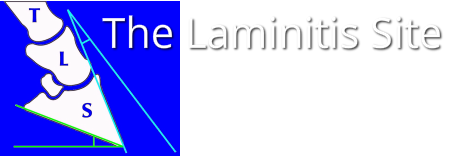
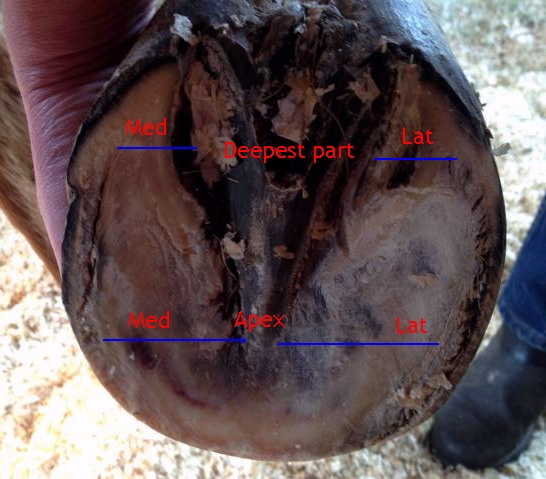
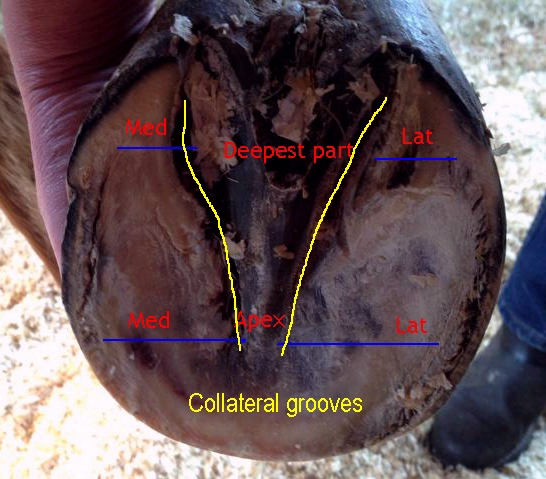

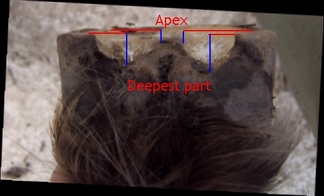
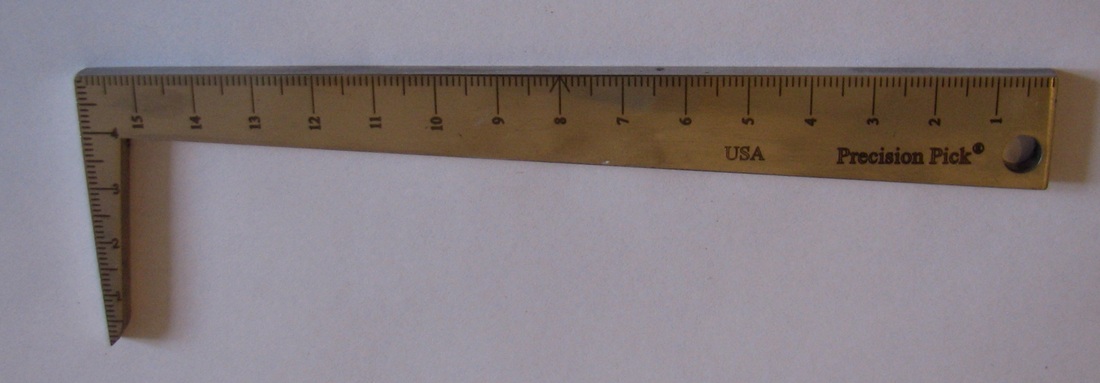
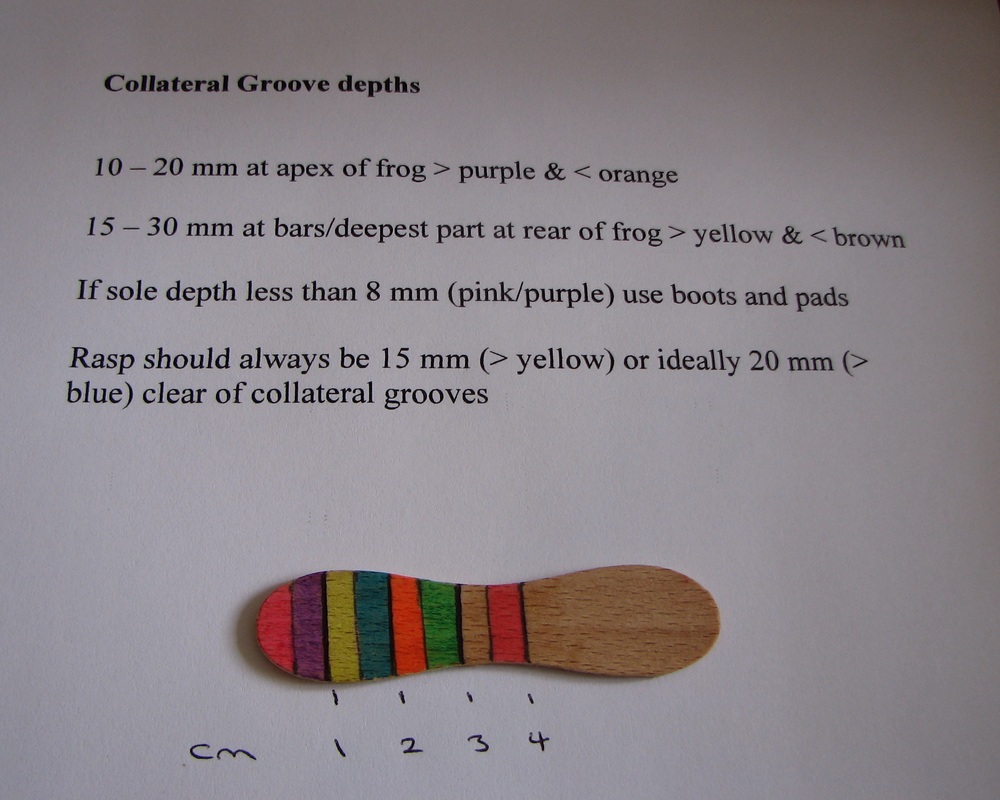
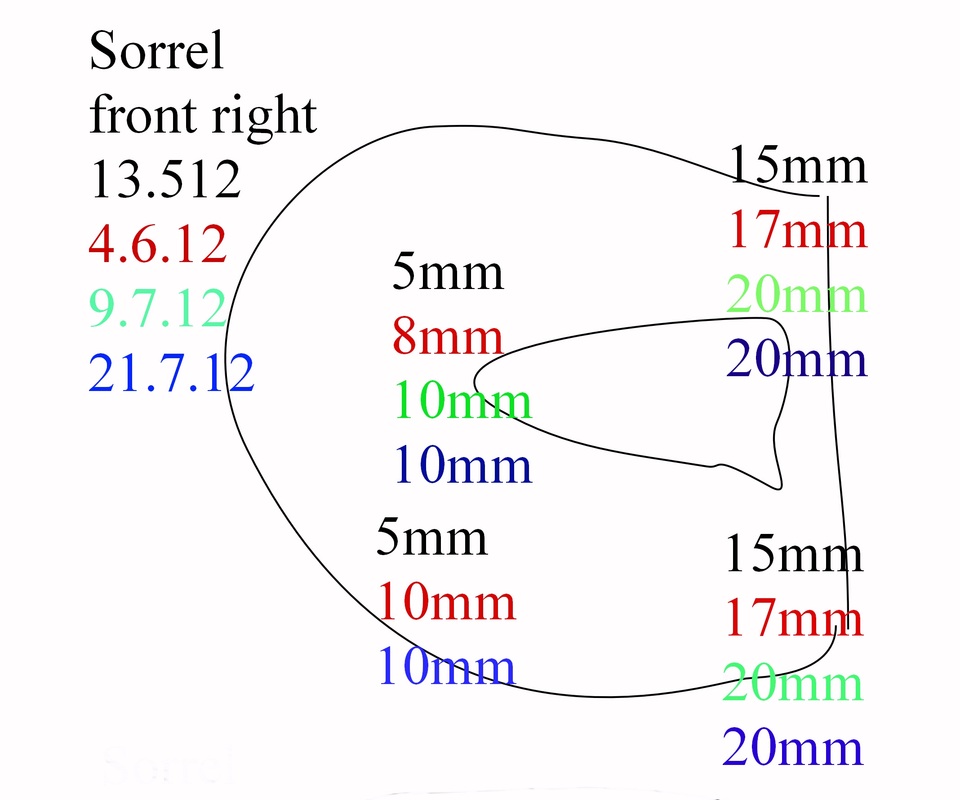
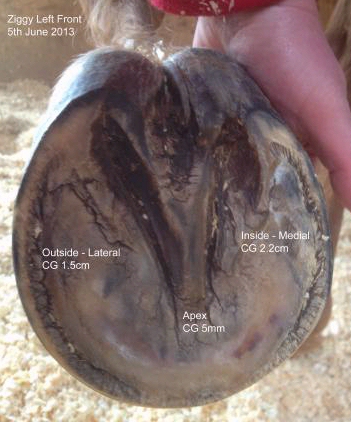
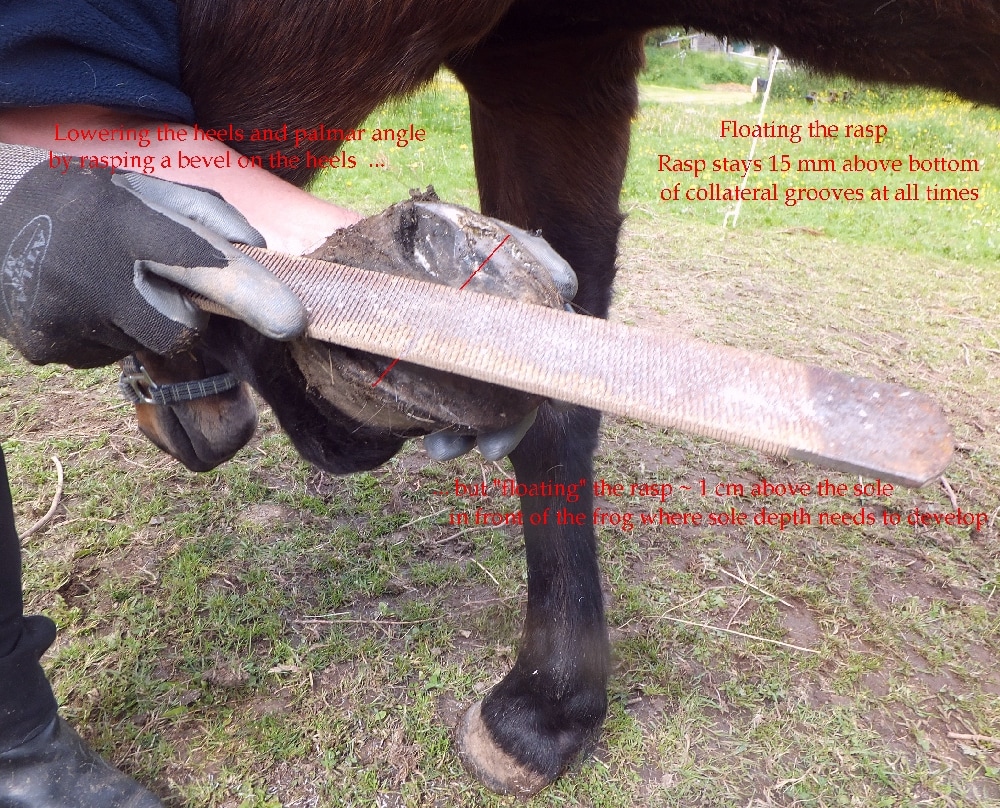
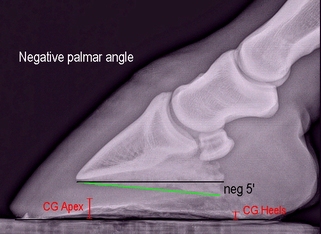
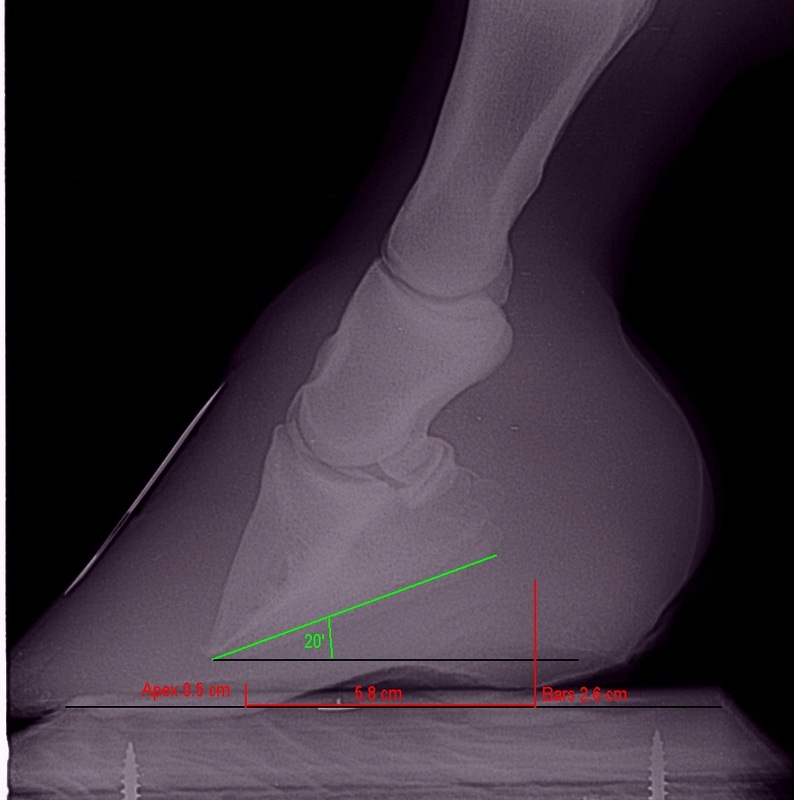
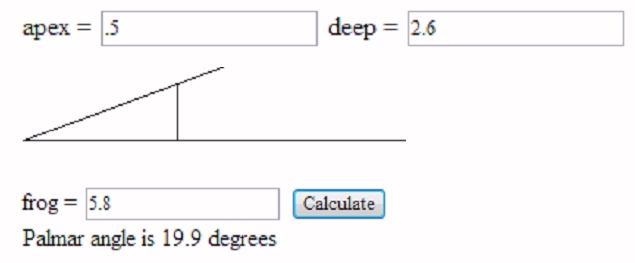
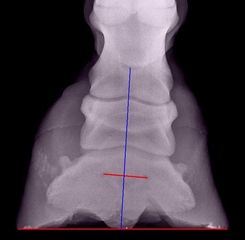
 RSS Feed
RSS Feed